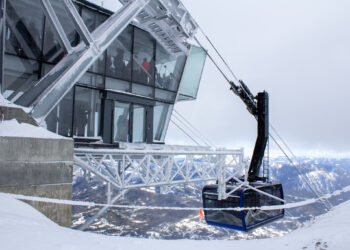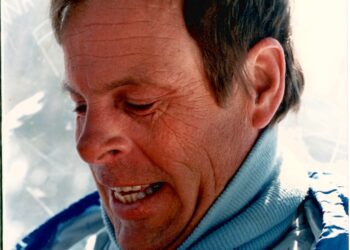By Tyler Allen EBS Senior Editor
BIG SKY – Twila Moon says she’s probably been a scientist her whole life, and that her family used to call her the “inspector.”
The glaciologist and Big Sky resident is now a National Science Foundation postdoctoral fellow at the University of Oregon, studying some of the most dramatic changes humanity has witnessed on this planet.
“I’ve always liked studying the earth,” Moon says. “Glaciers and ice sheets are changing now, and impacting the earth now. It’s really exciting to me.”
Moon studies the ice sheets on top of Greenland and Antarctica, and is using satellite data to create an entirely new dataset to document their ice loss and the corresponding, projected sea level rise as the planet warms.
Greenland and Antarctica host the only two ice sheets on the globe. The rest of Earth’s perennial ice is locked up in glaciers and ice caps. The movement of glaciers is controlled by the rock that it sits on, and ice caps are glaciers that are connected to each other – their movement is also determined by the topography beneath them.
Ice sheets are so massive that their movement isn’t controlled by the terrain beneath them, rather their interactions with atmospheric and ocean temperatures, and gravity. The thickest ice sheet in Greenland is nearly two miles thick, while Antarctica’s sheet is nearly three miles from its surface to the rock beneath it.
Rising seas
Some of the data Moon is collecting is to understand how these ice sheets are changing: how quickly they move, how quickly they’re losing ice, and how they interact with the ocean.
“As temperatures are warming in the ocean, [I’m looking at] what that means for additional melt and instability of ice sheets and how they affect sea levels, ocean temperatures and salinity,” Moon said. “There are lots of circles and loops – warming in the ocean increases ice sheet loss.”
If all of Greenland’s ice were to melt, it would raise global sea levels an average of 6 meters – Antarctica’s ice sheets would contribute approximately 60 meters of sea level rise if it all melted into the ocean, Moon said, adding that future projections are pretty standard that by 2100 a 1-meter global average is likely.
But sea level rise doesn’t happen equally around the globe, according to the Intergovernmental Panel on Climate Change’s Fifth Assessment Report, finalized in November 2014.
“Changes in ocean currents, ocean density, and sea level are all tightly coupled such that changes at one location impact local sea level and sea level far from the location of the initial change, including changes in sea level at the coast in response to changes in open-ocean temperature,” the report said.
Coastal communities around the world are the first to feel the impacts, especially in areas like the southeastern U.S. Parts of coastal Texas and Louisiana are already naturally subsiding, contributing to the “relative” sea level rise. In Grand Isle, in La.’s Mississippi River delta plain, sea level is already rising at a rate as high as 0.32 inches per year, according to a joint 2008 report by the U.S. Climate Change Science Program and the Subcommittee on Global Change Research.
From about 1880 to the present, Louisiana has seen a sea level rise of 46 inches; New York City, 14 inches; and Los Angeles has experienced a rise of 4 inches – the global average is approximately 8 inches, Moon said.
International economics such as shipping industries are affected by rising seas, and many of our major economic centers are on the coasts. Through her research, Moon hopes to find how quickly the sea level will rise, by studying how quickly the ice sheets melt – this information could help communities adapt to predicted changes.
Reason for hope
Moon says she often gets the question: “Is it too late?”
“I tell people don’t get stuck in the ‘seems too big’ conversation,” she said. Noting past history in the U.S., Moon says a total sea change can happen in 10 years, similar to the country’s rapid conversion to coal during the Industrial Revolution. “Things that seemed impossible [can] occur really quickly.”
Any amount of action today, tomorrow or next week is going to make a difference, Moon says, and that can get lost in the climate change conversation. Alternative energy technologies like wind and solar are out there, and they’re constantly getting cheaper.
“The really important thing to understand about this problem [is] it’s not a cliff,” Moon said. “Yes, every day we’re not doing something, our future is becoming a little worse. But every day we do something it’s getting better.”
She says the U.S. can be a leader on an issue such as climate change, and can gain back some of the technological edge it lost to other developed and emerging nations in recent years. America still has some of the best universities in the world and this issue holds great promise to gain back that advantage, Moon said.
“There’s always an opportunity to do something [that’s] going to have an effect on our future.”
This is the first story in a multi-part series about Twila Moon’s climate change research. Future installments will explore the specifics of her satellite research and how this issue may affect Montanans.











